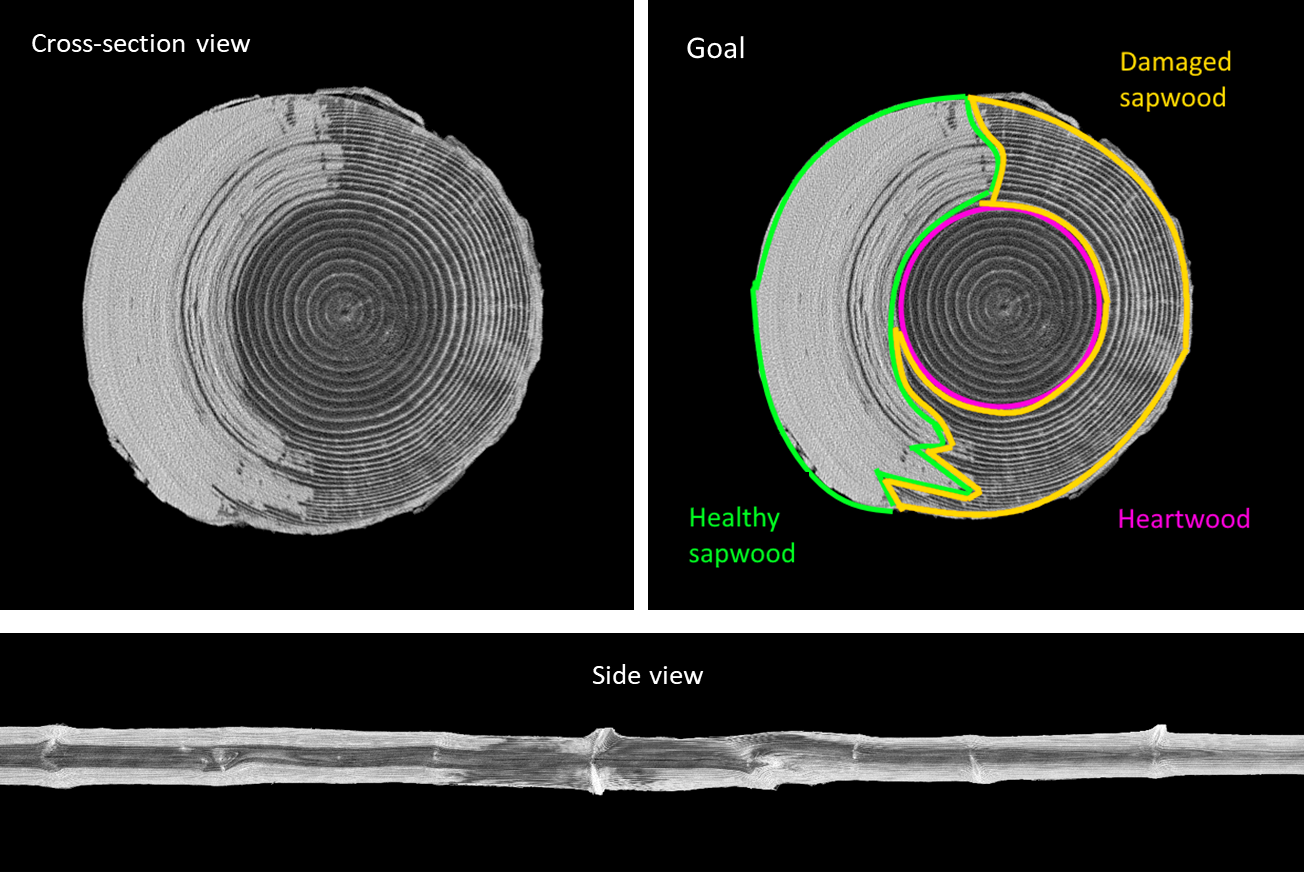Illustration (click to hide):

Project Description
Törskate is a rust fungus that infects pine trees, primarily in northern Sweden. The tree’s defense mechanism is to store resin and produce fatwood, which gives it undesirable properties in use as sawmill timber. Since the rate of infection is increasing, significantly more timber damaged by Törskate is expected to reach Swedish sawmills in the future. Today, there is no automatic method for detecting if a tree log is damaged by Törskate. There are also large gaps in knowledge about the fungus infection progression and the tree’s defense mechanism.
Skogforsk and Luleå Tekniska Universitets avdelning för Träteknik have in an earlier project shown that damage from Törnskate in tree logs is possible to detect via CT-scanning (3D X-ray). In this project, the goal is to automatize the detection method in images from laboratory-environment CT-scanners. The biggest challenge is to distinguish between damaged wood and normal heart wood, since these have similar intensity values in the CT image. Both classical and more recent machine-learning based methods will be tested. Another challenge is to handle the large image datasets from the 3D-scanned logs. A more long-term goal is to adapt and validate the developed method in the production environment of a sawmill.
The project is financed by SSF (Stiftelsen för Strategisk Forskning Stockholm), Skogforsk, and Gunnar Hedlunds Hedersfond via Norras Forskningsstiftelse. The project is also co-financed by SciLifeLab via NBIS LTS project support.
Dick Sandberg (LTU) is the main supervisor and PI. Sheng Leslie Joevenller (LTU/Skogforsk) is co-applicant. Kari Hyll (Skogforsk) is project leader.
Project Information
-
BIIF Principal Investigators
- Fredrik Nysjö
External Authors
Sheng Leslie Joevenller, Kari Hyll, Dick Sandberg -
Date
2022-08-31 🠚 Current